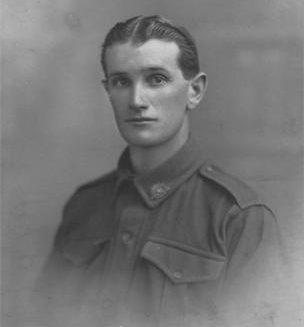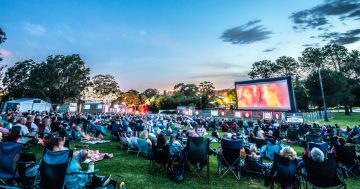
Woonona brothers Henry, Frank and Charles Alderson all fought in World War I. Charles was killed in action in France. Photos: Illawarra Remembers.
They were young men, single and married, workers, students or jobless, but they all had one thing in common – a passion to serve their country.
Thousands of Illawarra residents signed up to serve in World War I. Sadly, many of them never made it home. Some died in battle and were buried in war cemeteries (or unknown graves) far away from their families. Some died due to the injuries they received, while others succumbed to sickness or disease. The lucky ones made it home, though their lives would never be the same.
But like all those service men and women who went before them, or served after them, their sacrifice is remembered and honoured, especially on Anzac Day.
Ten years ago, as Australia prepared to mark the 100th anniversary of the Anzacs landing at Gallipoli, an ambitious project was launched in the Illawarra to make sure the names and service of residents who contributed to the Great War were never forgotten.
Illawarra Remembers 1914-1918 is an online archive, the result of two years of archiving, scanning, digitising and amateur history work by Wollongong, Shellharbour and Kiama council librarians, as well as citizens.
It features photographs, stories, news reports, letters and links to official war records.
“War memorials display the names of war dead, but this is about their stories,” said Wollongong deputy mayor Chris Connor at the launch.
As we approach this Anzac Day, it’s worth revisiting Illawarra Remembers, and learning more about the lives of those honourable and brave residents, many of whom made the ultimate sacrifice for their country.
Here are just some of their stories.
Henry, Frank and Charles (aka Harold Palser) Alderson
The brothers were born in Woonona to Henry and Phoebe (nee Clark) – Henry in 1893, Frank in 1896 and Charles in 1898. Henry and Frank were both single when they enlisted in 1915; Henry was a builder and Frank, a carpenter. They arrived in Gallipoli in May 1915.
Henry was evacuated to hospital on 21 August 1915 and sent to England suffering from pleurisy and enteritis. He was not well enough to return to the front and he saw out his war service in England. Henry died in 1980 aged 87.
Frank was evacuated to hospital in Malta sick with influenza also in 1915. He rejoined the battalion in 1916 and saw service on the Western Front until he was wounded in action on 8 June 1917. He was evacuated to hospital for treatment of a serious injury to his right hand and lost three fingers.
He was returned to Australia in November 1917 and died in 1929.
Charles first enlisted at age 16, but when his age was discovered he was sent home. As soon as he turned 18, Charles enlisted again, using the alias Harold Palser. According to his enlistment papers, “Harold” was a 22-year-old single man employed as a clerk.
He was posted to 20th Battalion and arrived in France on 23 March 1917.
On 3 May 1917, the 20th Battalion was involved in the battle at Bullecourt and Charles was killed in action. There is no known grave.
Charles’ service is commemorated under his true name on the Australian National Memorial at Villers-Bretonneux.

John McLean. Photo: Illawarra Remembers.
John was born in Kiama in 1892, to parents Mary (nee Lackey) and John.
He arrived in France on 8 June 1916 and saw service on the Western Front until 28 October 1916 when he was sent to England to join 12th Training Brigade.
On 1 January 1917 John was promoted to Lieutenant and served as an instructor training new men from Australia.
He went back to France in August 1917 and joined the 45th Battalion in the field. On 27 September, the battalion was at Polygon Wood in Belgium when John left the support line to view the area the battalion was about to take over. He was seen entering no-man’s land near Polygon Wood, Belgium, but was never seen again.
There is no known grave for John; he is commemorated on the Menin Gate Memorial at Ypres, Belgium.

James Ducksbury. Photo: Illawarra Remembers.
James was born in Unanderra to Henry and Mary (nee Scott) about 1893 and attended Unanderra Public School.
At 21 when he enlisted, James was single and working as a fireman. He was a noted cyclist and footballer, having represented the South Coast on several occasions.
One of the earliest recruits, he embarked from Sydney on 20 October 1914, and served with the Mediterranean Expeditionary Force.
He fought in Egypt with the 55th Battalion, taking part in the Battle of Tel-el-kebir.
In 1916, he joined the British Expeditionary Force in Marseilles, France. Later that year he was wounded in action with a shrapnel wound to the head and sent to England for treatment.
He returned to the Western Front in October 1917, but on 26 April 1918 he was severely gassed during fighting. He died of his wounds on 30 April and was buried in Vignacourt British Cemetery.

Balgownie Anzac and champion footballer James “Judy” Masters. Photo: Illawarra Remembers.
Some war veterans later became household names in the Illawarra, like James “Judy” Masters.
Born on 21 May 1892 in Balgownie, James was the 7th of 13 children to Alexander and Frances (Campbell). All of the children attended Balgownie School.
He joined the army in 1915 at the age of 23 and embarked on HMAT Ceramic A40. His service included Egypt, Gallipoli and France where he became a stretcher bearer and bandsman.
After receiving a shoulder wound at Poizeres, James was allowed leave in England for rehab where he met his English wife-to-be, Annie Barraclough.
Following his six years of war service, James returned home to Wollongong where he married Annie.
He resumed his sports career and from 1923 to 1928, he captained Australia in 22 international soccer games against New Zealand, China, Canada, English professionals and Czechoslovakia. From the age of 15, he played 401 club matches and scored 351 goals.
He died on 2 December 1955 in Balgownie at the age of 63. The Balgownie soccer ground, Judy Masters Park, was named in his honour.

Ernest Gow. Photo: Illawarra Remembers.
Ernest was one of the first men from the Illawarra to die in World War I, not in battle but due to illness.
He was born in Wollongong in 1890, the son of William and Minnie Gow (nee Baldwin). Ernest had lived with his family at Croome, and had worked for the Albion Park Post Office.
Ernest enlisted at Randwick in the AIF on 12 September 1914 and left Sydney a month later.
Sadly, he was one of the first men from the Illawarra to die in World War I of double pneumonia at the Mena Hospital in Cairo on 3 February 1915. Ernest was buried in Cairo, Al Qahirah, Egypt in the British Protestant Cemetery.
















